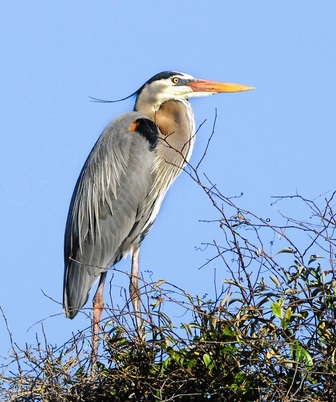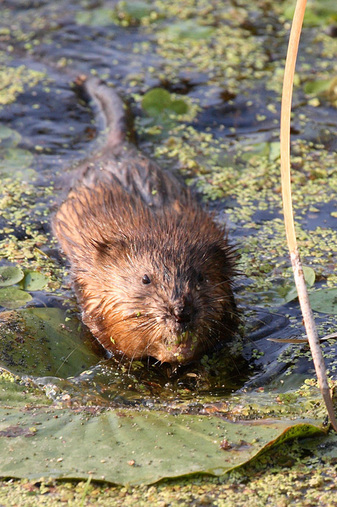Native and Invasive Species
|
What are native and invasive species?
Native, or indigenous, species are species that function in a region or ecosystem without human intervention. Some of the most commonly found in the Wicomico River watershed include cattails, loblolly pines, bald cypress trees, wood ducks, muskrats, and snapping turtles. Invasive species are any non-native plants, animals, or bacteria that cause harm, whether it be to a habitat or human health. Not all non-native species are invasive. In fact, about 75% of non-native species are beneficial to their new ecosystems. Unfortunately, those that are considered invasive can destroy entire habitats. Where do invasive species come from? Humans, intentionally or not, are almost always responsible for the introduction of invasive species. In many cases, a species brought economic success to its native area which lured people to introduce that species to a new area. When those species enter a new ecosystem, they often have no natural predators. This allows uncontrolled growth of their population. Invasive species may also be accidentally transported during human travel, whether it be seeds on the boot of a hiker going a few miles or the side of a boat travelling the world. Animals may sometimes be responsible for the transferring of species as well, but this process is often much slower which allows time for ecosystems to adapt to the newly introduced species. The speed of introduction is often the difference between non-native and invasive. |
|
What are the invasive species of the Wicomico?
Invasive species that have had the largest impact on the Wicomico River include nutria and common reed. However, in 2014 Wicomico County was reported to be the home of 83 invasive plant species alone. Maryland, overall, had 440 invasive plant species present that year. For a full list as well as locations by county, visit the Early Detection and Distribution Maps. For a broad guide including more animals, visit the MDA Plant Protection online guide. A list of invasive species that affect homeowners and how to get rid of them can be found on the Department of Natural Resources Forest Pests page. Why are native species important?
Native species have adapted together over time to become the most efficient species for their role in their food webs and habitats. When non-native plants enter a food web, they generally have fewer predators than the natives, requiring the use of man-made chemicals or controls. Even a different variation of the same species can be either non-native or invasive. Non-native plants also bloom at different times than the native plant species they compete with. This often causes native animal populations to drop because they have not adapted to the changes and lack critical food sources throughout the seasons. This can force them to move elsewhere, thus reducing biodiversity and overall wildlife presence. Even migrating species depend on the consistency of particular blooms. If a migrating species relies on a consistent food source that is neither abundant nor present, the migrating species and virtually all ecosystems they pass through often see a decline in biodiversity and wildlife presence. Ecosystems primarily consisting of native species are far more stable. This prevents not only the ecosystems collapse, but decreases the likelyhood of a species leaving its native area. When a species leaves it puts other ecosystems at risk not only because they could potentially be invasive, but also because they could carry diseases that other ecosystems have no adapted to. What are the native species of the Wicomico? The native species of the Wicomico are everywhere. To see the most well-known species as well as how they interact, check out the food webs of the Wicomico. There are far more species, native, non-native and invasive to the area, that can be found on this website including birds, herps, mammals, and fish. The Maryland Department of Natural Resources released a list in 2010 of Rare, Threatened, and Endangered Species. Virtually all of these plants and animals listed are native to the Wicomico River and its watershed. |
|



